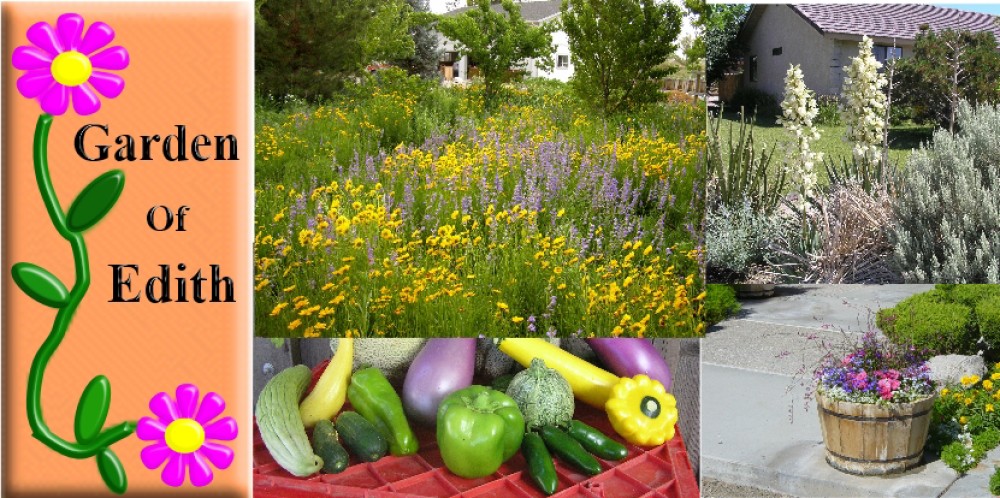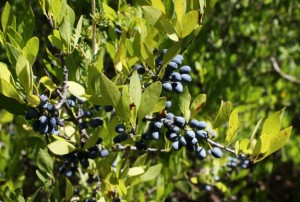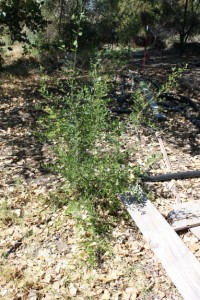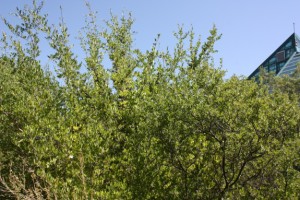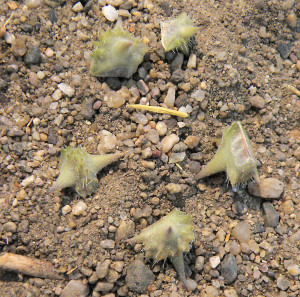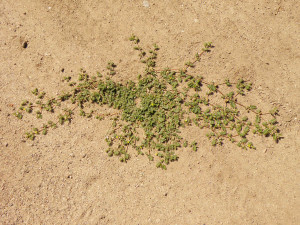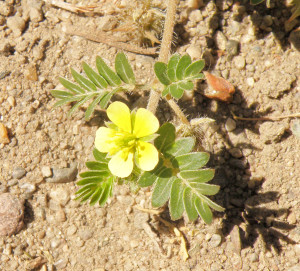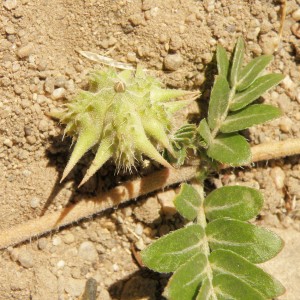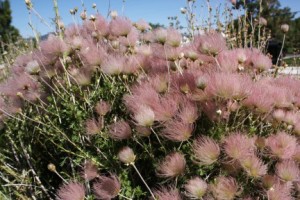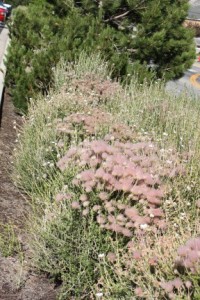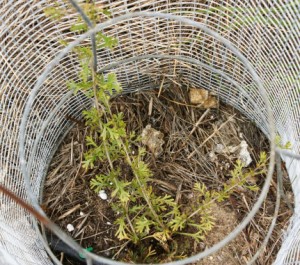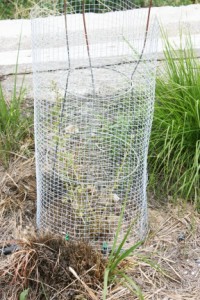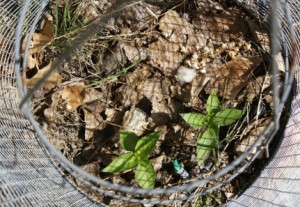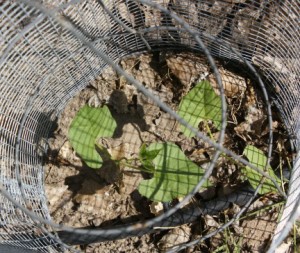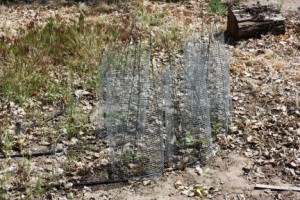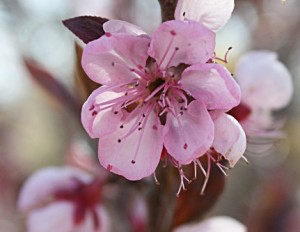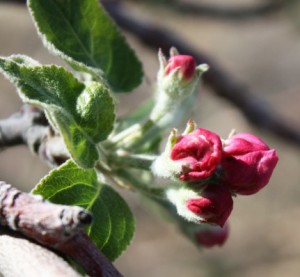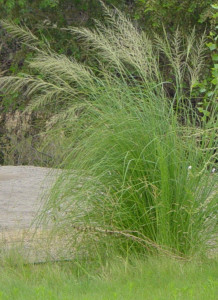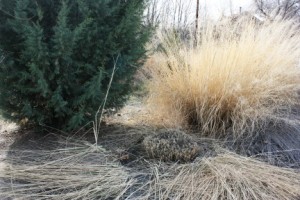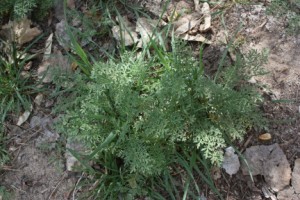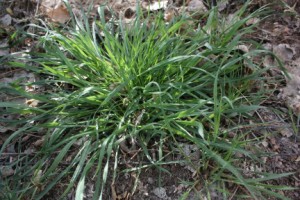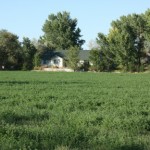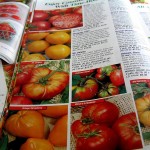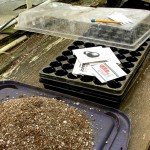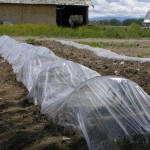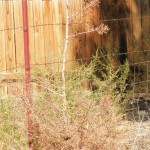It’s been awhile since I posted. Part of the reason for this long silence has been my
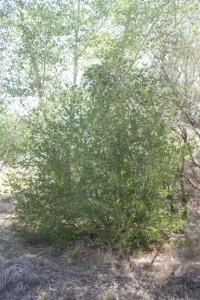
The more dense foliage in the foreground is my New Mexico Privet which stands about 15′ tall. The tree in the background is some species of cottonwood.
search for plants I really want to put in my garden that meet my criteria. My criteria are low water requirement, tolerant of alkaline soils, winter hardy to zone 5, and low maintenance. Not all the plants I want will be low maintenance but realistically I can’t manage three acres of high maintenance plants so most of what I plant will have to be low maintenance. One plant I’ve been observing that I already have in my garden is Foresteira neomexicana and I’ve decided I want more of this large shrub or small tree.
I just got back from a trip to Albuquerque, NM where I visited the Albuquerque Biopark botanical garden. There I saw Foresteira neomexicana or New Mexico privet. This is the first time I’ve seen the berries on this plant. My own New Mexico privet does not have berries but blooms every spring. Since I only have one that is mature enough to bloom. The other New Mexico privets I’ve planted more recently and they are less mature and I have yet to see them bloom. In researching this plant on the Internet I find that you need more than one blooming because male and female flowers are on different plants. This means I’ll have to wait until my smaller New Mexico Privets mature
enough to bloom to see if mine will produce berries.
Information I found on the Internet says you can prune New Mexico Privet to be a small tree and that this is great for urban and suburban landscapes where power lines are a problem since it only reaches a mature height of about 15′; well under the standard power line height. For my property I have a few power line issues but mostly I’m interested is screening, shade, low water consumption, low maintenance, and wildlife friendly. New Mexico trims into a hedge or remove lower branches to create a small tree. Either of these forms will require regular pruning to maintain. I’m more interested in just letting it grow to be the shrub it would be in the wild. If I let them reach their full size and don’t prune them into trees I could plant them 5′ to 8′ apart to get a good sound barrier or windbreak and for me this would be useful. Additionally having more of these plants may
ensure I have some that produce berries that attract birds and I wouldn’t mind doing some bird watching on my own property.
An even more appealing fact I found on the Internet is that Foresteira neomexicana is native to arid habitats in New Mexico, Arizona, Colorado, California, Nevada, Utah, Texas, and Oklahoma. Since I live in Nevada and it is very desert around me I’m looking for plants like this one. Although I don’t get the 9″ to 24″ of annual precipitation that is characteristic of where this plant grows wild, I do have the ability to water it and I live where the water table is high. Supplemental watering and a high water can make up for the fact my average annual precipitation is only 4″. This past winter was extremely dry here in Nevada, where we are in our fourth year of drought and still my mature New Mexico Privet looks good. I didn’t even water it over the winter but I cannot say the same for my roses that were watered over the winter.
So now, I’m starting more New Mexico Privet from seed to join the others I’ve already planted. To do this I must cold stratify seed for 30 days at a temperature around 40°F. Then I will plant the stratified in moist potting soil in a green house to get it to germinate.
Once germinated, I’ll raise them up from greenhouse seedling to potted plants in a lath
house and finally transplant them outside in the ground.
